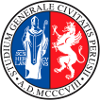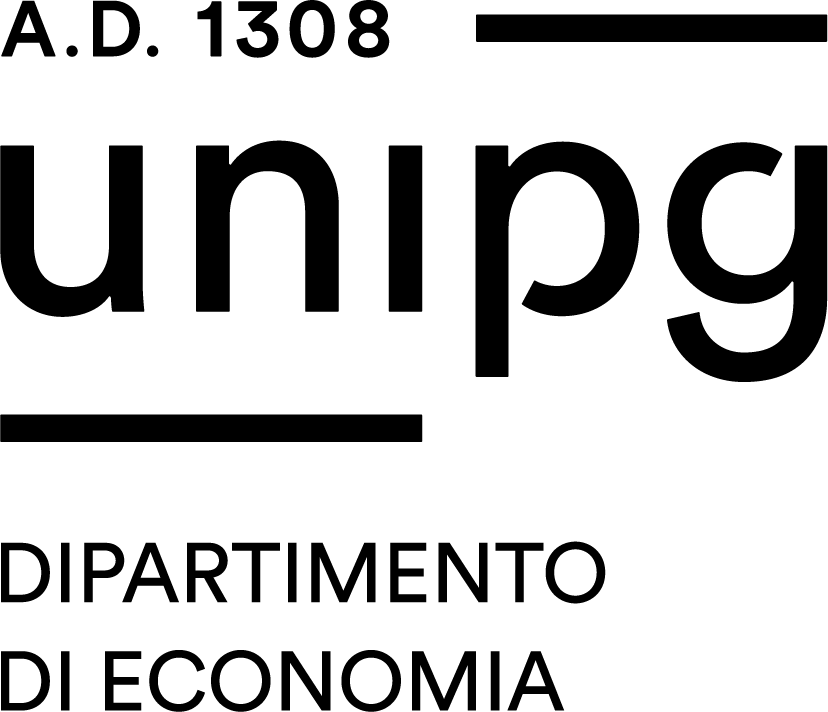Study-unit SANITARY ENGINEERING PRINCIPLES
| Course name | Civil and environmental engineering |
|---|---|
| Study-unit Code | A002103 |
| Location | PERUGIA |
| Curriculum | Ingegneria ambientale |
| Lecturer | Alessia Flammini |
| CFU | 10 |
| Course Regulation | Coorte 2023 |
| Supplied | 2025/26 |
| Supplied other course regulation | |
| Type of study-unit | Obbligatorio (Required) |
| Type of learning activities | Attività formativa integrata |
| Partition |
SANITARY ENGINEERING
| Code | A002104 |
|---|---|
| Location | PERUGIA |
| CFU | 5 |
| Lecturer | Alessia Flammini |
| Lecturers |
|
| Hours |
|
| Learning activities | Caratterizzante |
| Area | Ingegneria ambientale e del territorio |
| Sector | ICAR/03 |
| Type of study-unit | Obbligatorio (Required) |
| Language of instruction | Italian |
| Contents | Elements of environmental health engineering. Urban wastewater: characteristics of wastewater, estimation of wastewater flows, plant diagrams. Lifting plants at the head of the plant. Physical treatments: screening/sieving, equalisation, homogenisation (basics), sand and oil removal, discrete and mass sedimentation. Biological and chemical processes: suspended biomass reactors; biomass growth rate; degree of utilisation of soluble substrate; biological removal of organic substances, biological nitrification and denitrification; oxygen demand; aeration systems; biological (brief overview) and chemical dephosphatisation. Tertiary treatments: filtration (brief overview) and disinfection. Sludge treatment: overview of the sludge line (thickening, aerobic or anaerobic stabilisation, dewatering and transport to landfill, biogas production). |
| Reference texts | SUGGESTED TEXTS: Duplicated Lecture notes SUPPLEMENTARY TEXTS: L. Bonomo, Trattamenti delle acque reflue, McGraw-Hill L. Masotti, P. Verlicchi, Depurazione delle acque di piccole comunità, Hoepli Editore. Metcalf & Eddy, Ingegneria delle acque reflue. Trattamento e riuso, McGraw-Hill |
| Educational objectives | Dublin 1. The main knowledge and understanding will concern: the processes of environmental pollution of surface water bodies; the characteristics of urban waste water and first rain water; the main ideal reactors; physical, biological, bio-chemical purification processes; the main plant schemes for urban waste water treatment. Dublin 2 and 3. The ability to independently apply the skills acquired will concern: the calculation of the main design parameters of primary and secondary sedimentation tanks, sand traps, aerobic and anaerobic biological compartments; the choice of disinfection techniques for purified water; the choice for thickening, conditioning, dehydration and sludge disposal. Dublin 4. Interaction in the classroom on learning topics will allow you to acquire an appropriate language to communicate and exhibit the topics covered Dublin 5. The topics dealt with will be presented critically, leaving the possibility open to further study with references to scientific literature in the sector. |
| Prerequisites | Mathematical analysis: analytic functions, differential and integral calculus of functions of single and several variables, partial differential equations. Physics and Rational Mechanics: vector calculus, cardinal equations of statics and dynamics. Hydraulics: elements of Hydrostatics, open channel flow and pressurized flow. Chemistry: chemical reactions and redox reactions |
| Teaching methods | Theoretical lessons and practical training. Classroom lectures on all subjects of the program with interactive involvement of students. Classroom exercises performed on the blackboard. Seminar frontal lessons with projector support. |
| Other information | Statistical data on student exam results: Students sample: 80; Average grade: 27.07/30; Standard Deviation 1.50/30 Percentage of students who obtained an exam mark included in the range 18 - 21: 2.5 % 21 - 24: 6.3 % 24 - 27: 38.8 % 27 - 30: 52.4 % The schedule of the exams is available at the following link: http://www.ing1.unipg.it/didattica/studiare/calendario-esami The teaching material provided by the teachers is available in https://www.unistudium.unipg.it/unistudium/ |
| Learning verification modality | The exam of the course is an oral interview lasting about 40 minutes, aimed at ascertaining: - the knowledge of the theoretical-methodological contents of the course; - the knowledge of the models adopted to simulate the different physico-chemical-biological processes on which the purification of wastewater is based; - the knowledge of plant solutions for the removal of pollutants from wastewater and for the stabilization of waste sludge; - the competence in applying the proposed computational procedures; - the autonomy of judgment in evaluating the different design strategies; the student's ability to expound with propriety of language the topics proposed by the committee, to sustain a dialectical relationship during discussion and to summarize the application results of the computational procedures studied. |
| Extended program | Natural water bodies 1. sources and effects of pollution; 2. self-purification processes; 3. oxygen balance; 4. eutrophication and water quality. Urban wastewater treatment: 1. Wastewater characteristics: i) general treatment criteria and main design parameters (SS, SSV, BOD, COD, TOC, ThOD, TKN); ii) correlations between BOD, COD and TOC; iii) pollutant loads and concentrations. 2. Estimation of wastewater flows: i) dry weather flows; wet weather flows; ii) coefficients and peak flows. 3. Typical plant layouts and flow diagrams (primary, secondary and tertiary treatment). Lifting plants: head, plant curve, pump characteristic curve, centrifugal pumps, principles of sizing lifting stations with parallel pumps with different working sequences. Physical treatments: i) coarse screening, fine screening, sieving, pollutant equalisation, flow homogenisation (basics), sand and oil removal; ii) sedimentation according to Stokes' formula (granular sludge), flocculent sludge and mass sedimentation under static and continuous flow conditions; iii) design criteria for primary and secondary sedimentation tanks, sedimentation efficiency, flotation, aeration systems. Chemical and biological treatment processes: i) role of microorganisms, suspended biomass reactors; ii) bacterial growth, biomass production, oxygen demand; iii) biological kinetics (Monod's law and Michealis Menten's law): terminology, soluble substrate utilisation rate, biomass growth rate, effect of temperature; iv) biological removal of organic substances, biological nitrification, biological denitrification, O2 demand and aeration systems; v) fundamentals of biological (outline) and chemical phosphorus removal. Tertiary treatments (overview): filtration (overview) and disinfection (chlorine, chlorine dioxide, peracetic acid, UV). Sludge treatment: overview of the sludge line (thickening; aerobic and anaerobic sludge stabilisation; sludge conditioning and dewatering; disposal, biogas production). |
| Obiettivi Agenda 2030 per lo sviluppo sostenibile | This teaching contributes to the realization of the UN objectives of the 2030 Agenda for Sustainable Development. Objective code: 6, 9, 13 |
BIOTECHNOLOGICAL TREATMENT OF WASTE
| Code | A002105 |
|---|---|
| Location | PERUGIA |
| CFU | 5 |
| Lecturer | Daniela Pezzolla |
| Lecturers |
|
| Hours |
|
| Learning activities | Affine/integrativa |
| Area | Attività formative affini o integrative |
| Sector | AGR/13 |
| Type of study-unit | Obbligatorio (Required) |
| Language of instruction | Italian |
| Contents | Biotechnological treatment of waste and organic by-products. The distinction between waste and by-product. Aerobic, anaerobic and integrated treatments. Energy and matter recovery through biotechnological waste treatment in a circular economy. The concept of biorefinery for the production of Biofuels and bioenergy will also be addressed. |
| Reference texts | Teaching material in electronic format provided by the teacher on the UNISTUDIUM platform. Vismara, Grosso, Centemero: Compost ed energia da biorifiuti. Dario Flaccovio Editore. Ciavatta, Gigliotti et al.: Biomasse in agricoltura. Pàtron Editore |
| Educational objectives | The course aims to introduce concepts relative to biomass-waste recycling for green chemistry promoting the circular economy and the end of waste. The course will introduce the drivers of the bioeconomy. Energy vs. food conflict, biomass production limits and other social themes will be implemented to place the bioeconomy in the new world focused on the Circular Economy. Scientific and technical aspects related to biomass origin, production, and characteristics will become part of the knowledge to address the biorefinery concept to produce biofuels, bioenergy and biochemical. |
| Prerequisites | No prerequisite. |
| Teaching methods | Lectures Classroom exercises Seminars |
| Other information | For information on support services for students with disabilities and/or SLD, visit the page http://www.unipg.it/disabilita-e-dsa |
| Learning verification modality | Written and oral exam on the dates available on the Exam Calendar published on the DICA website. The exam consists of a discussion lasting about twenty minutes aimed at ascertaining the knowledge level acquired by the student. If the student intends to anticipate the exam in a previous year to the one scheduled in the study plan, it is recommended to attend the cycle of lessons and to take the exam in the first useful session after the lessons have ended, thus respecting the semester of teaching planning. |
| Extended program | To provide students with the necessary skills in biomass and waste treatment, to minimize environmental impacts due to poor resource management. Programme: - European and national waste legislation. - Collection and organic fraction of urban waste. - Biomass: sewage sludge, livestock-derived organic materials, agro-industrial wastes and lignocellulosic biomass. - Biomass processes: composting, anaerobic digestion, integrated treatment, biorefinery, biological mechanical treatment and landfill. - Odour control and energy and environmental balance of FORSU treatment. |
| Obiettivi Agenda 2030 per lo sviluppo sostenibile | Affordable and clean energy. Responsible consumption and production. Climate action. |


